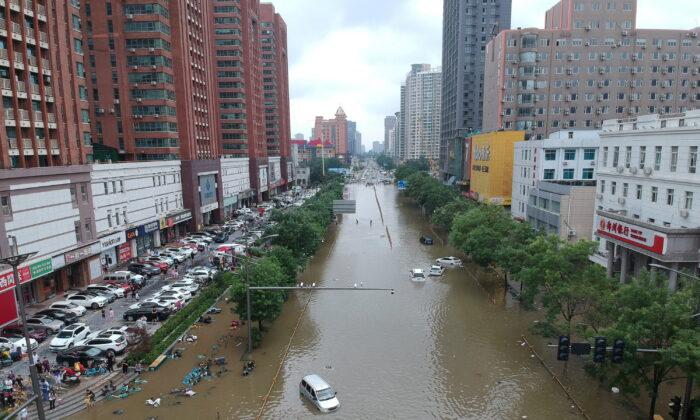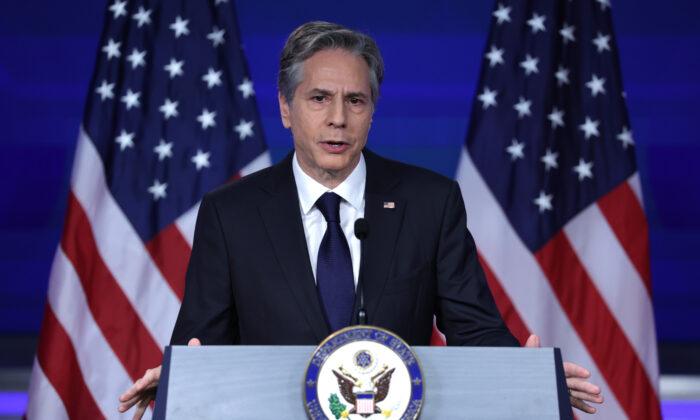Concealing Facts
There was no doubt that Zhengzhou experienced an exceptionally intense torrential downpour. The city’s meteorological bureau registered a 1-hour rainfall of 201.9 millimeters (8 inches) from 4 to 5 p.m. on July 20—equivalent to nearly one-third of the annual rainfall of 640 millimeters (25 inches) the city receives in a normal year. Understandably, this would cause serious citywide flooding.The official narrative played up that fact and claimed that it was a “once-in-a-thousand-year” event, implying that it was beyond human ability to avert the resulting loss of life and property.
Tech-savvy netizens immediately dug up statistics to refute the official claim. The Weibo page of the China Amateur Meteorologists posted a table comparing the 2021 July downpour with the 1975 August one, which shows the largest rainfalls recorded for the 1-hour, 3-hour, 6-hour, 24-hour, and 72-hour period, respectively. Clearly, the latest downpour was definitely not “once in a thousand years,” and in many ways, it was less severe than the last one. This table was later deleted but a screenshot is reproduced here.

Chen Sou, the chief forecaster at the Central Meteorological Bureau, agreed. He said China doesn’t possess a reliable long-term record to back up such a statement.
Obviously, the authorities lied. In doing so, they purposely tried to conceal two facts.
First, despite multiple alerts and forewarnings, the provincial and municipal authorities did nothing to mitigate the crisis. As of July 27, the official death toll was 71, but the actual number is presumed to be much higher due to strict CCP censorship.
Before the inundation on July 20, the provincial meteorological bureau had issued an alert almost a week ahead of the incoming calamity. On July 19, the city’s meteorological bureau issued four warnings, and on July 20, it altogether issued six warnings and urged authorities to take precautionary measures, including a general stoppage of social gatherings, schooling, work, and transportation.
If these warnings had been heeded, fewer lives would have been lost.
Article 11 of China’s “Administration of the Release and Dissemination of Early Warning Signals for Meteorological Disasters” obligated regional authorities to take prompt actions to alleviate the crisis once such early warnings were issued. From the first warning issued at 1:08 a.m. on July 20 until the crisis set in at 4 p.m. in the afternoon, the city government had fully 15 hours to declare a general stoppage as suggested by the meteorological bureau and would have avoided the unnecessary deaths. Clearly, the authorities are guilty of malfeasance.
Second, an unalerted flood discharge took place at the Chang Zhuang dam.
The dam lies 3.7 miles west and upstream of Zhengzhou. While a flood discharge might have been unavoidable, it should have been forewarned. But it took place at 10:30 a.m. on July 20 and wasn’t announced until 1 a.m. on July 21. This showed the authorities’ blatant disregard for lives and property downstream. An intense torrential downpour coupled with an irresponsible flood discharge could only aggravate the crisis.
Information Blackouts
Whenever a crisis strikes China, the CCP official media are completely silent. The Henan Provincial TV station showed nothing of the crisis on the evening of July 20. On July 21, the front page of the People’s Daily didn’t carry a single word about the calamity, which was relegated to a seventh-page position.Spinning the Official Narrative
The authorities also tried to spin the calamity to their own advantage. For example, the Propaganda Department of the Zhengzhou Party Committee declared that after the flood, “The city will become cleaner. Plants will grow better. Our people will emerge stronger.”By doing so, the authorities tried to divert people’s attention away from the misdeeds of the Party and its regime.





